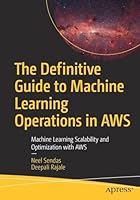
Advances in Design for Inclusion
- Length: 388 pages
- Edition: 1st ed. 2019
- Language: English
- Publisher: Springer
- Publication Date: 2018-06-24
- ISBN-10: 3319946218
- ISBN-13: 9783319946214
This book addresses a range of topics in design, such as universal design, design for all, digital inclusion, universal usability, and accessibility of technologies for people regardless of their age, financial situation, education, geographic location, culture and language. It especially focuses on accessibility for people with auditory, cognitive, neurological, and visual impairments, ageing populations, and mobility for those with special physical needs.
The book explores some of the overlaps between inclusive design and web accessibility to help managers, designers, developers, policy makers, and researchers optimize their efforts in these areas. Based on the AHFE 2018 International Conference on Design for Inclusion, held on July 21–25, 2018, in Orlando, Florida, USA, it discusses new design technologies and highlights the disparate needs of the individuals within a community. Thanks to its multidisciplinary approach, it is a valuable resource for readers from various backgrounds, providing them a timely, practice-oriented guide to design for inclusion.
Table of Contents
Chapter 1. Providing Context-Sensitive Mobile Assistance for People with Disabilities in the Workplace
Chapter 2. User Perceptions of Haptic Fidgets on Mobile Devices for Attention and Task Performance
Chapter 3. Evaluation of Design Recommendations for the Development of Wheelchair Rugby Sports-Wear
Chapter 4. Emotional and Stress Responses to Cyberbullying
Chapter 5. Wellness for All: Novel Design Scenarios and Concepts of Products-Systems for an Inclusive User Experience in Indoor Physical Activity
Chapter 6. Evaluating a Proposed Design for All (DfA) Manual for Architecture
Chapter 7. Design for Enabling Technologies. A Framework to Empower Multi-level User Engagement
Chapter 8. Anthropometric Data Collection of Portuguese Overweight and Obese Children Using a Kinect Body Image System: Preliminary Results
Chapter 9. Assessment of How Inclusive Are Shopping Centers for Blind People
Chapter 10. Game for the Digital Inclusion of the Physically Disabled with Reduced Mobility
Chapter 11. Playgrounds for All: Practical Strategies and Guidelines for Designing Inclusive Play Areas for Children
Chapter 12. Preprocessing the Structural Optimization of the SPELTRA Robotic Assistant by Numerical Simulation Based on Finite Elements
Chapter 13. Device Design for the Learning Processes of Children with Cerebral Palsy
Chapter 14. Design for the Sensitive Experience: Inclusive Design in Historical-Archaeological Contexts
Chapter 15. Inclusive, Active and Adaptive Design as Approaches to User-Centered Design
Chapter 16. The Influence of Adding Vibrations on the Impression of Messaging on Smartphones
Chapter 17. Inclusive Design of Open Spaces for Visually Impaired Persons: A Comparative Study of Beijing and Hong Kong
Chapter 18. Lighting in the Workplace: Recommended Illuminance (lux) at Workplace Environs
Chapter 19. The Inclusion of Children with Total Visual Impairment in Learning Activities of Daily Living, Especially the Act of Eating Independently
Chapter 20. Inclusive Responsiveness – Why Responsive Web Design Is Not Enough and What We Can Do About This
Chapter 21. Evaluating Accessibility and Usability of an Experimental Situational Awareness Room
Chapter 22. Design Guidelines for Adaptable Videos and Video Players on the Web
Chapter 23. Social Inclusion and Territorial Enhancement: A Project of Tourism Interactive Information System for Bike Users
Chapter 24. Understanding the Experience of Teenagers as Bus Passengers for the Design of a More Inclusive Bus Service
Chapter 25. Inclusive Smart Parking: Usability Analysis of Digital Parking Meter for Younger and Older Users
Chapter 26. Design of a Low-Cost Wheelchair for Open-Source Platform: First Phase
Chapter 27. An Eye-Tracking Study on Usability and Efficiency of Blackboard Platform
Chapter 28. Supporting Inclusive Approaches in Service Design with Netnography
Chapter 29. Braille Cursor: An Innovative and Affordable Refreshable Braille Display Designed for Inclusion
Chapter 30. Case Studies of Inclusive Higher Education in Norway, Sweden and Slovakia
Chapter 31. Inclusive Design of Wearable Smart Objects for Older Users: Design Principles for Combining Technical Constraints and Human Factors
Chapter 32. Internet of Things and Elderly: Quantitative and Qualitative Benchmarking of Smart Objects
Chapter 33. Social Footprint. An Exploratory Analysis of Existing Evidence and Opportunities
Chapter 34. Graphic Design of Interactive Tools for People with Autistic Spectrum Disorders
Chapter 35. Use of the Functional State Simulator of the Elderly Adult to Identify Requirements for the Design of Food Containers







